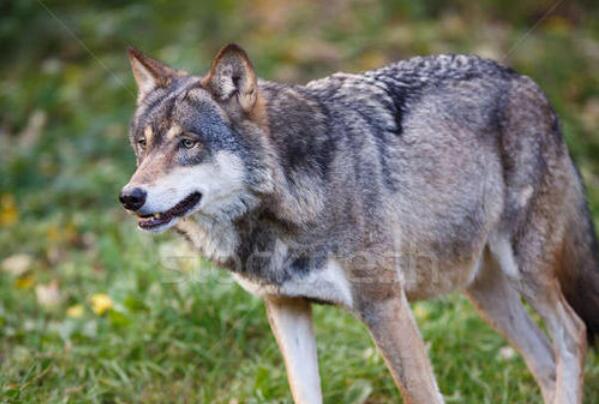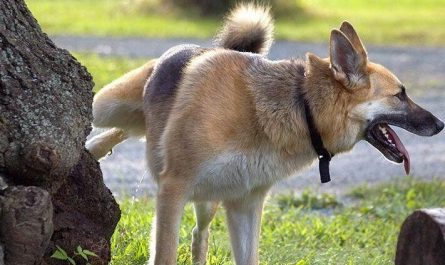The reason why the eyes of a wolf are green
The wolf’s eyes emit green light at night, because the special crystal spot at the bottom of the wolf’s eye gathers the weakly scattered light around it, gathers it into a beam and then reflects it out, so it is not actually the wolf’s eye itself that emits green light.
This starts with the role of the pupil, which is located in front of the lens and controls the intensity of light entering the lens, which changes with the intensity of the light from the outside world. Cat’s pupils enlarge at night and try to receive as much light as possible. However, because of the convergence of the lens and ciliary body, the convex lens, the light converges in a small area. It is precisely because the pupils are larger and the photoreceptor cells of people in the dark are Columnar cells, the sensitivity increases, you can see that they are bright!
There are many special crystal points at the bottom of the wolf’s eyes. These crystal points have a strong ability to reflect light. They can gather the weakly scattered light around them, aggregate them into beams, and reflect them in a concentrated manner, as if the wolf’s eyes are glowing.
This is a common physiological phenomenon in wild animals. There are many special crystal points at the bottom of the eyes of many animals. These crystal points have a strong ability to reflect light. They can gather the weakly scattered light around them, aggregate them into beams, and reflect them in a concentrated manner. Animals with such glasses They are generally capable of nocturnal activities. They can distinguish objects by their tiny light, and it seems from the outside world that their eyes are glowing. Most nocturnal animals with such glasses include wolves, cats, tigers, leopards, owls and so on.
The reason why animal eyes glow at night
The eyeballs of cats and canines have a special structure. When the light passes through the retina and reaches the iris at the back of the eyeball, it is reflected by the iris to the retina again for imaging. This is why cats and dogs can hunt with low light at night. The light reflected from the iris will still pass through the retina, which is why the eyes of cats and dogs glow in low light.
The cat’s eyes are very special. When the light is strong, its eyes will appear as a line; when the light is dark, its pupils will be enlarged; in the dark, the cat’s eyes will be bright, and whenever these eyes are When it shines, it always feels scary.
In fact, the cat’s eyes do not emit light by themselves, but there is a substance similar to a reflector on the retina behind its eyeball, which can reflect the collected light energy. So we see cat eyes are bright at night. The cat’s pupil is very elastic and its ability to contract is also very strong. Therefore, the cat’s vision is very sharp, it should be 6 times stronger than human vision. This keen vision and wide angle of view make it a much wider range of things than people. Then this extremely strong vision also constitutes a necessary condition for its survival.
The sun shines on the earth and brings light and warmth to the creatures on the earth, which is a kind of “hot light”. The light emitted by luminous animals is light that does not emit “hot” and is called “cold light”.
Animals are very common to emit light. In addition to the familiar fireflies, there are corals, shrimps, clams, cuttlefish, etc. Even insects, centipedes, snails and birds can emit beautiful light in various forms.
So, where does the light emitted by animals come from? Many people think it is the effect of phosphorus. In fact, most animals’ luminescence is not caused by phosphorus. For example, fireflies have light-emitting cells in their tails. The luciferin and luciferase in the light-emitting cells can convert chemical energy into light energy in the air, and emit light.
There are two reasons why animals in the ocean glow. One is due to the luminous bacteria attached to the fish body, like hairtails, the luminescence is generally caused by the luminous bacteria on the body. These luminescent bacteria often live in symbiosis with fish. Animals such as angle ankang and long-tailed cod use the light emitted by the symbiotic luminescent bacteria to illuminate and hunt for food, and the luminescent bacteria rely on nutrients from the animals to maintain their lives. The other is due to the excretion of luminescent substances from the animal body to the skin, which is called extracellular luminescence. For example, a deep-water blackfish (squid) living in darkness will eject a luminous liquid, making the chasing enemy at a loss and taking the opportunity to escape.
With the continuous development of science and technology, the cold light emitted by animals has been widely used. Now scientists are constantly exploring new uses for it to better serve humanity.
The status of wolf population
Activities in the provinces of North China, Central China, and South China are only in mountainous environments and are not suitable for human development. The distribution of wolves in Heilongjiang, Jilin, Liaoning and other provinces is also limited to mountainous areas. Wolves are the most widely distributed in the order Carnivora. Even in all mammals, their distribution range is only smaller than that of humans and a few other rodents. They are found in parts of the northern hemisphere, including grasslands, tundra, coniferous and deciduous forests, swamps and deserts. But behind this, the actual situation faced by gray wolves is: in most regions, their global population is less than 10,000. There are no traces of wolves in most areas of the United States except for the northern states (because ecologists’ studies have shown that wolves are irreplaceable in the ecosystem, wolves are being reintroduced in many parts of the United States). The wolf pack was extinct in 1960, as did most of Asia. The situation in Europe is the worst. Except for a small number of wolves in Spain, Italy, Poland, Greece and Turkey, almost all of them have become extinct.
The cause of death of wolves
Most of the deaths of adult wolves are caused by hunting and poaching, disease and trauma. Although adult wolves are occasionally killed by competitors or prey, their most dangerous non-human enemy is the wolf itself. The results of the study of wolf mortality show that 14% to 65% of wolf deaths are due to attacks by other wolves. In addition, wolves are infected by domestic dogs, such as rabies, parvovirus, and canine distemper.






